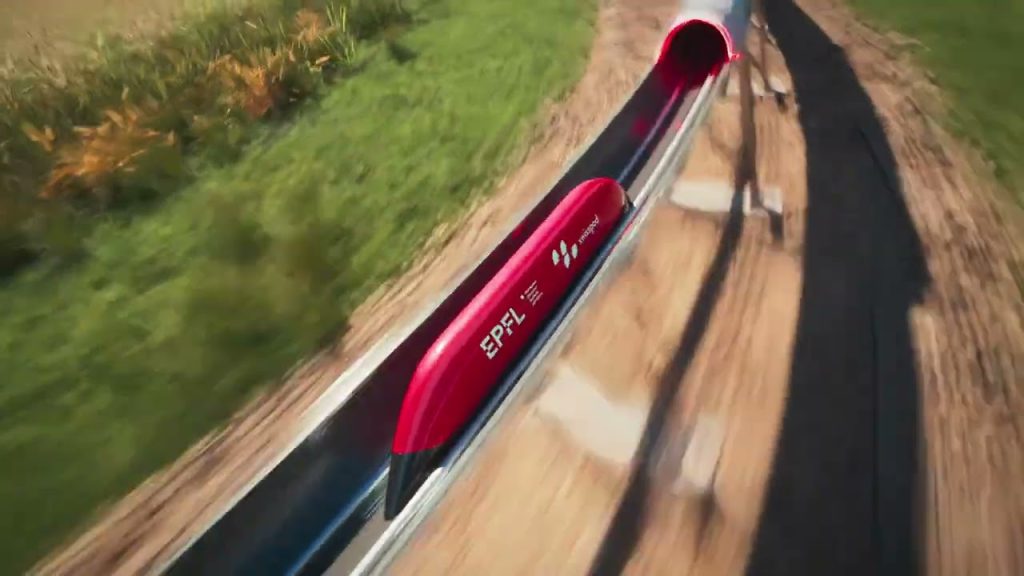Despite many setbacks and the collapse of some of the major companies behind Elon Musk’s vision of high-speed, tube-based travel, the hyperloop concept isn’t entirely dead. In fact, a Swiss team is still pushing forward with the idea—albeit at a 1/12th scale. In a recent milestone, this team successfully conducted the longest-ever hyperloop test using a small-scale model, keeping the dream of ultra-fast, sustainable transport alive.
A Step Toward the Hyperloop’s Future
The hyperloop concept was first introduced by Elon Musk in 2013, where he envisioned passengers traveling at speeds of up to 760 miles per hour (about 1,220 km/h) inside aerodynamic capsules through low-pressure tubes. The system was billed as a revolutionary, fifth mode of transport, with the potential to drastically reshape how we travel, trade, and live. However, despite early enthusiasm, numerous obstacles—including financial troubles, regulatory challenges, and engineering hurdles—have slowed progress, leaving the hyperloop’s future uncertain.
One of the largest companies working to bring the concept to life, Hyperloop One, shut down in 2023, further dampening optimism about the project’s viability. But the vision isn’t entirely lost. In Lausanne, Switzerland, a dedicated team is still working on the hyperloop concept under a project called LIMITLESS (Linear Induction Motor Drive for Traction and Levitation in Sustainable Hyperloop Systems).
The Swiss Hyperloop Test
The Swisspod Technologies team, in collaboration with the Federal Institute of Technology Lausanne (EPFL) and the School of Business and Engineering Vaud (HEIG-VD), recently conducted a key test on their 1/12th scale hyperloop model. The test took place on a circular track measuring 120 meters long, with a diameter of just 40 centimeters—modest in size, but crucial in advancing the technology.
During this test, the hyperloop pod traveled 11.8 kilometers (about 7.3 miles) at a speed of 40.7 km/h (25.3 mph). While these numbers might seem unimpressive compared to the vision of speeds upwards of 700 mph, the team believes the results scale up to real-world possibilities. In fact, the test data suggests that if the system were scaled up to full size, the journey would correspond to a distance of 141.6 km (88 miles)—roughly the distance between Geneva and Bern—and a maximum speed of 488.2 km/h (303.4 mph).
The purpose of the test was not to break speed records, but rather to evaluate and refine the core systems necessary for a working hyperloop. The team monitored vital subsystems like propulsion, thermal management, energy consumption, and control mechanisms during various stages of the journey—acceleration, cruising, coasting, and braking. These tests aim to validate the technology’s functionality and prepare for future, larger-scale iterations of the hyperloop.
The Roadblocks Ahead
Despite the impressive nature of these tests, the hyperloop still faces numerous challenges. Most of the companies and startups aiming to bring the concept to fruition have failed due to financial mismanagement or the enormity of the task. Critics argue that while the technology may be theoretically feasible, the project is still a long way from reality—often referred to as “vaporware” or a “utopian vision.”
In addition, regulatory and infrastructure challenges continue to plague the development of any full-scale hyperloop. The infrastructure alone would require massive investment and significant political support, with hurdles around land use, environmental impact, and safety regulations.
Even Elon Musk, the hyperloop’s most famous advocate, seems to have shifted his focus away from the project. His tunneling company, The Boring Company, continues to work on underground transit systems in cities like Las Vegas—but those tunnels are for Teslas, not hyperloops. Musk’s recent distractions, including his political ventures and social media activity, suggest that the hyperloop may not be his top priority anymore.
Looking to the Future
Despite these setbacks, the Swiss team remains optimistic. Swisspod Technologies, led by CEO Denis Tudor, is actively working on a series of upcoming tests to further validate the system’s capabilities. The team is also preparing to build a larger test track in the U.S., where they hope to continue refining their system and eventually move toward freight and, later, passenger transport.
Tudor remains confident that hyperloop technology will one day revolutionize travel. “This is a key step toward making hyperloop for passengers a reality and changing how we connect, work, and live,” he stated. His optimism is bolstered by the ongoing research and development efforts, as well as the strong academic and engineering collaboration that powers the LIMITLESS project.
Conclusion
While the full-scale, operational hyperloop is still a distant dream, the 1/12th-scale test in Switzerland shows that there is still momentum behind this ambitious idea. Although many challenges lie ahead, and the project has yet to prove it can scale, the Swiss team’s work offers a glimmer of hope for the future of high-speed, sustainable transportation. Whether or not the hyperloop will ever become a mainstream mode of travel remains uncertain, but for now, at least the dream is still alive—and moving forward, one small step at a time.

